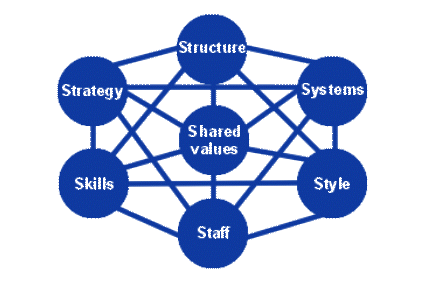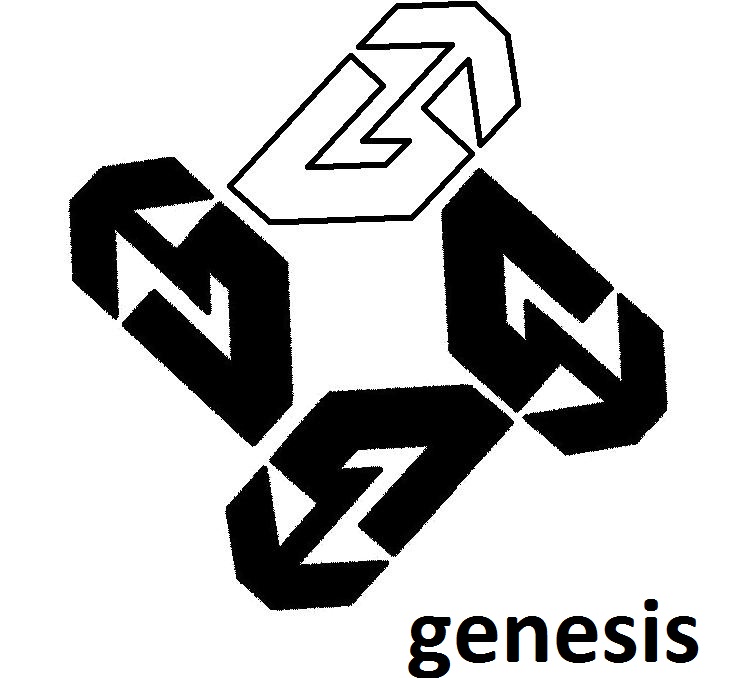Genesis Management Services Pty Ltd
CUSTOMER TYPES
Business
Government
Property
Education
AN INTRODUCTION TO THE 7-S FRAMEWORK
Or … HOW TO ORGANISE YOUR BUSINESS FOR CHANGE
Over the years we have found that most chief executives and senior managers, whatever the size or type of organisation, want to solve the same problems. To do this they usually choose a variety of approaches, such as benchmarking, best practice and TQM. But these initiatives frequently fail to achieve the anticipated results, and are often seen to be deficient by everyone in the organisation and also key stakeholders.
These are not 'failures of perception' - the ability to ask the right questions - but rather 'failures of execution', that is, the inability within the organisation to identify what needs to be done and then to do it.
Failures of execution are mainly due to two causes. Firstly, staff throughout the organisation are not always ready, willing or able to implement the initiatives and secondly, most initiatives address either strategy or structure and neglect other critical factors.
The 7-S Framework model can be extremely useful in addressing failures of execution.
This model was the result of research done in 1977 by international management consulting firm McKinsey & Company into how business should be organised to successfully implement strategies and be more effective.
The 7-S Framework, which became the basis of the book "In Search of Excellence", is based on the idea that real change in large organisations involves at least seven factors.
According to McKinsey, this is why it is difficult to change a large organisation in any fundamental way (this is also true for small organisations).
The 7-S factors for change are:
Structure
Division of tasks, span of control, reporting relationships. Most importantly, emphasis and coordination - how to make the whole thing work.
Strategy
Those actions that an organisation plans in response to or in anticipation of changes in its external environment - its customers and competitors.
Systems
All the procedures, formal and informal, that make the organisation go, day by day and year by year.
Style
How the top management team comes across to the organisation, symbolic behaviour, how time is spent, what managers do as distinct from what managers say.
Staff
Morale, attitude, motivation and behaviour. How employees are developed over time.
Skills
What the organisation does best - the dominating attributes or capabilities across the organisation as a whole.
Shared Values
The set of values and aspirations
that goes beyond the conventional, formal statement of corporate
objectives. The fundamental ideas around which the organisation is built.
Its culture.
By analysing organisations in terms of these seven factors, the 7-S Framework expands the diagnostic and remedial kit beyond the traditional tools for problem-solving, which tend to focus on structural and strategy responses.
Other key factors in an organisation's failure to perform up to expectations include systems that embody outdated assumptions, a management style that is at odds with the stated strategy, the absence of a shared value that binds the organisation together in pursuit of a common purpose, and the refusal to deal concretely with people problems and opportunities.
Enhancing corporate performance and the ability to change is not just a matter of understanding what is not working, just as designing a good bridge takes more than knowing why some bridges fail.
However, applying the 7-S Framework is a good starting point for organisations that are serious about excelling.
